In a collaboration between Collecteurs and ChART Contemporary, ChART’s founder Megan Connolly sat down with Beijing-based artist Guo Hongwei to discuss his new Capsule Edition.

Megan Connolly: When did you start painting and when did you decide to pursue a career as an artist?
Guo Hongwei: I started doodling at the age of three. Before the College Entrance Examination, I decided to attend an art school and major in painting. After I received my BA degree, I was determined to become an artist.
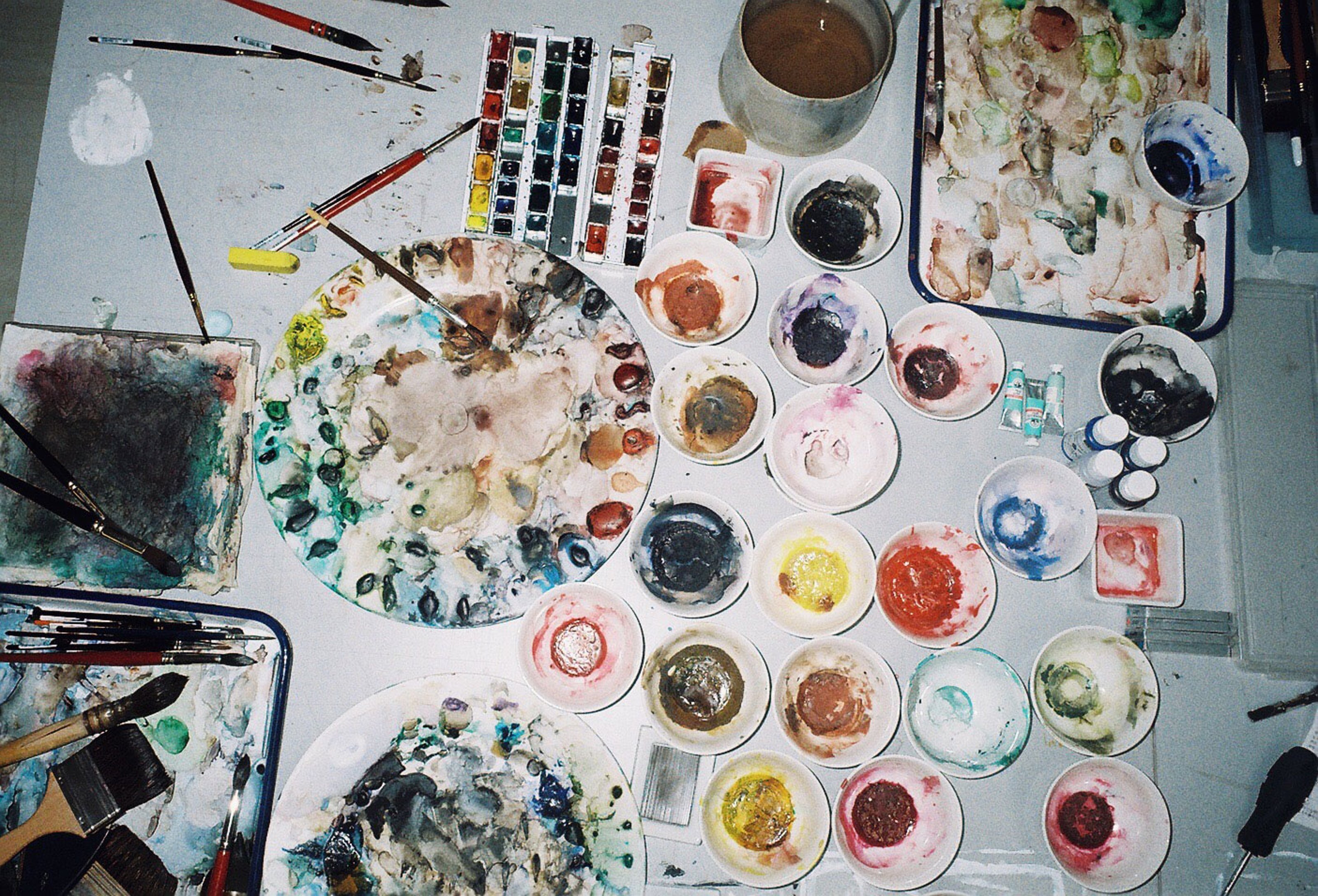
Guo Hongwei’s studio © 223 for Collecteurs Magazine
MC: How did your family react when you told them you wanted to become an artist?
GHW: They were very supportive, they also wanted me to become an artist.
MC: Who are some of your favorite artists?
GHW: There are many. I have always liked Degas.
Q: Do you have assistants working with you to create your work?
GHW: Yes, I do. They all have different personalities. It is very intriguing to work with them
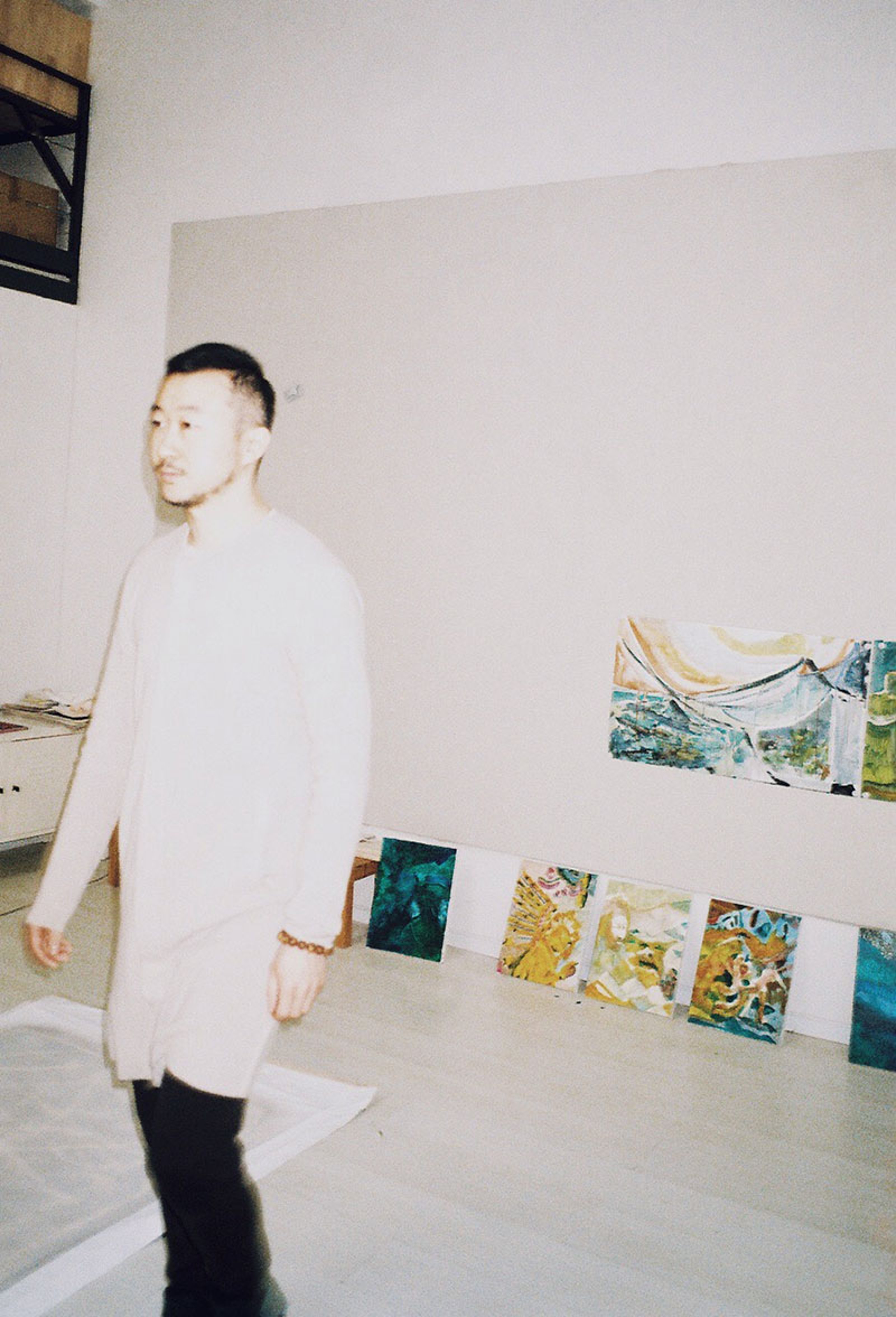
Guo Hongwei in his studio in Beijing © 223 for Collecteurs Magazine
Q: What is your general process when you decide to create new work. Do you sketch? Do you meditate? Do you use photographs?
GHW: My general process is spontaneous. There is always a reason that leads me to begin with a certain method, but I never follow the same process.
MC: You are extremely talented and gifted with watercolor. Do you see any link to Chinese ink painting?
GHW: Yes, but only because both are water-based mediums. Chinese ink painting focuses on improvisation and abstract brushstroke and composition to present possibilities. Watercolor attempts to offer meaning — “what it is” is more important than “what it could be.”

Guo Hongwei’s studio © 223 for Collecteurs Magazine
MC: Natural history heavily influences your art practice. What does nature mean to you? I find it interesting that as an artist who is so drawn to nature, you still choose to live in one of the world’s biggest cities. Why abide within urban landscape and not be surrounded by nature? Does missing nature make you love and need it more? Are you afraid your relationship to nature would change if experiencing it in the day-to-day?
GHW: Nature represents a wider and deeper reality. For someone like me who lives in a modern world, it is impossible to remain stuck in the concrete jungle. However, it is also impossible to immerse myself in nature completely. I can only experience environments and compare the differences between them. Our activities are influenced by the laws of nature, and this is why we feel the change in season, time, and experience personal growth. Nature never abandons us, but we feel the urge to distance ourselves from nature. This motivation comes from our desire to overcome the limitations of nature. But we will never succeed in reality, perhaps only in our dreams.
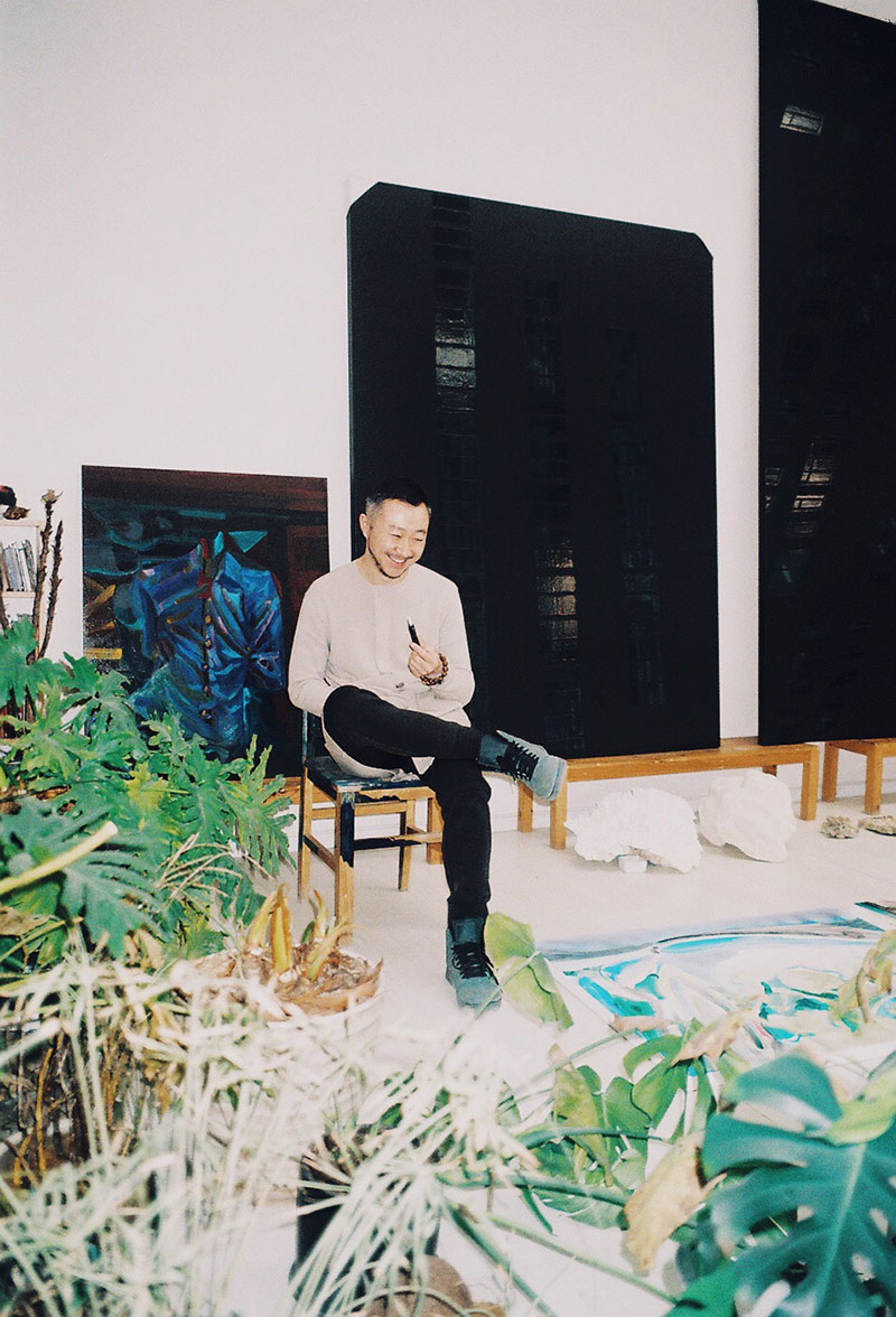
Guo Hongwei in his studio in Beijing © 223 for Collecteurs Magazine
MC: Memory and the past are another seemingly ever-abiding element within your work. Drawing photographs from your childhood, is it a way to relive or let go of the past?
GHW: My childhood photographs never bring me back to specific memories from the past because I have always been infatuated with the present moment. Painting photographs from my childhood is like searching for an obscure past that you are so certain happened but, at the same time, has become unclear and blurred.
MC: Besides memories and nature, where do you find your artistic inspiration?
GHW: From my daily life that lacks routine.
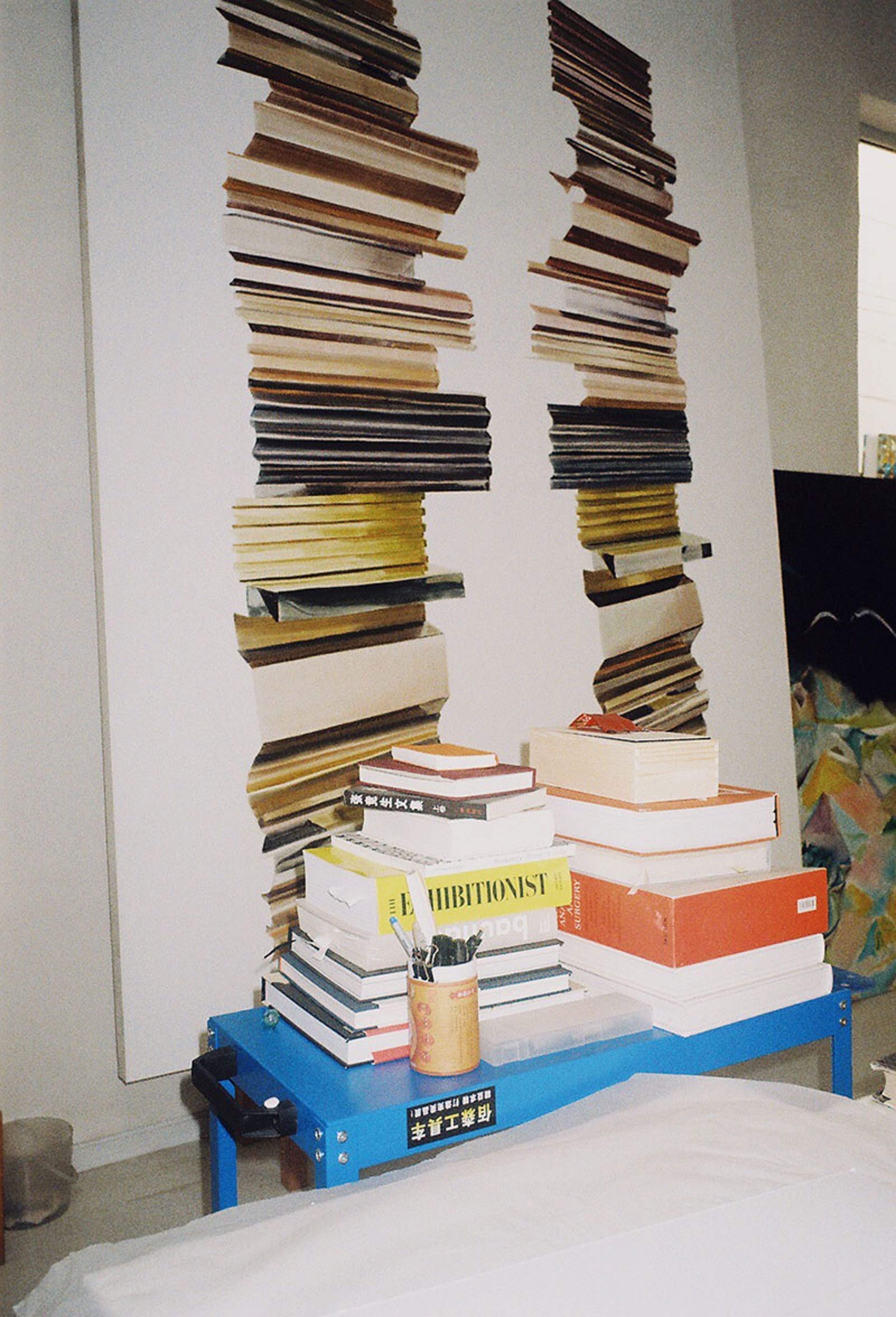
Guo Hongwei’s studio © 223 for Collecteurs Magazine
GHW: I really have no complaints. Beijing is one of the fastest changing cities on this spinning machine called Earth and while we enjoy the speed of how things are changing, we also experience how quickly the past fades away. We may long for a utopia here on Earth, but we can only search for it within our own reality.
MC: You once said, “to be working and painting is to witness my existence.” With this statement, did you refer to witnessing life consciously rather than subconsciously? How does witnessing one’s existence manifest? Does it imply to act with meaning?
GHW: The moment we talk about our subconscious, we have already consciously reasoned and analyzed it. The subconscious is just a different element of our consciousness. But, consciousness with a clear purpose allows me to control and plan my work. I prefer to live in the moment when I work. This is how I know the brushstroke I just painted is different from the one painted previously. It is through the variations in my brushstrokes that I discover the rhythm of recognition and perception embedded in my gestures and movements. Willpower helps me extend time, so when I don’t know what to do I can remain in the moment and concentrate on looking around and observing my environment. Even though we are not fully aware, our perception is actively searching for information from all possible combinations. There is no moment that is more capable of giving us a sense of existence than a memory that brings back feelings and emotions.
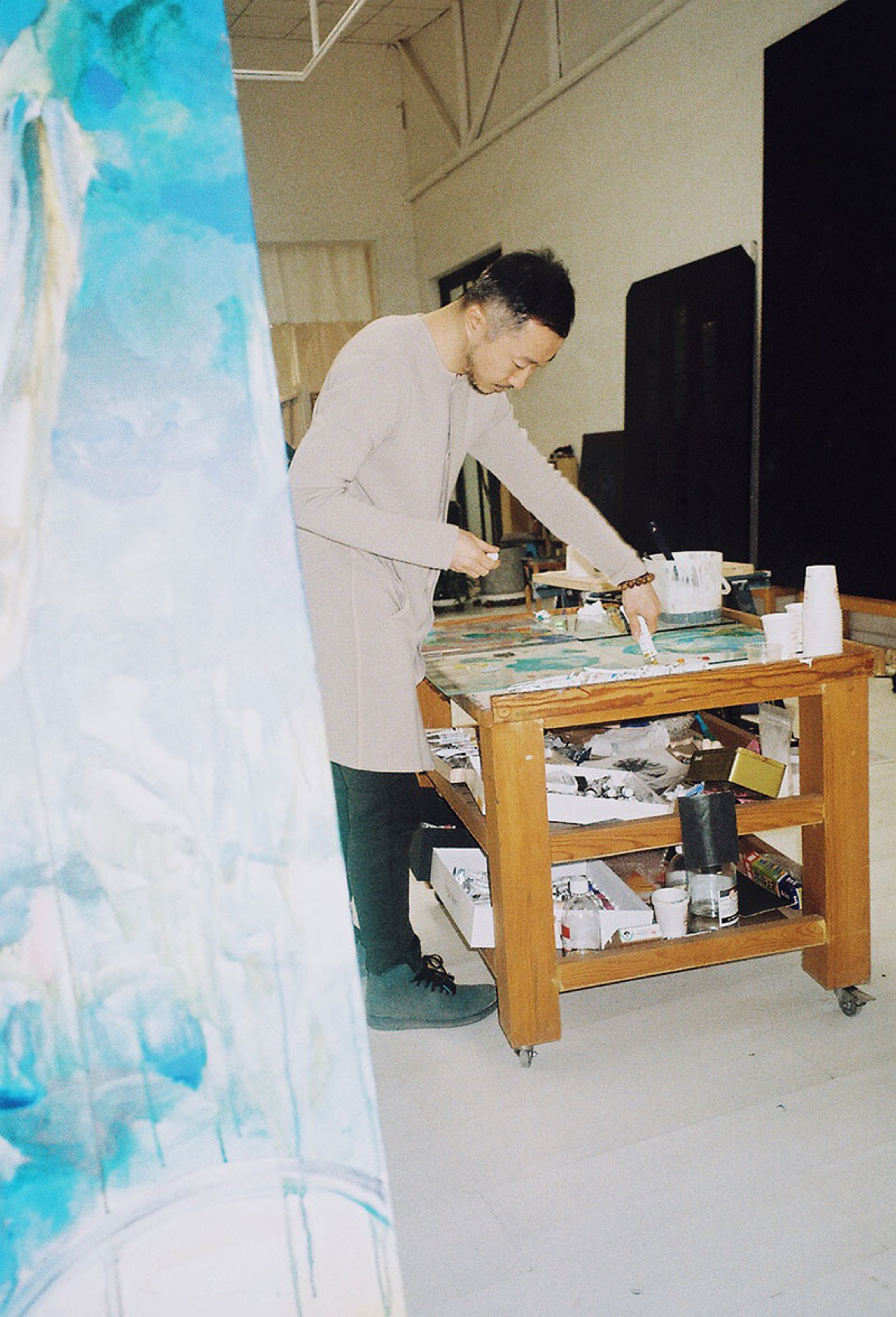
Guo Hongwei in his studio in Beijing © 223 for Collecteurs Magazine
MC: I visited your studio for the first time over 10 years ago and was greeted by portraits of children and daily objects. The last time I visited your studio, which was about 6 months ago, I encountered a space filled with abstract landscapes and studies focused on the exploration of composition and color. When and why did your practice shift from realism and figurative painting to landscape and abstraction?
GHW: In painting, abstraction and realism are just two extremes that we define based on our knowledge and experiences. As an artist, I navigate between these two extremes in my artistic pursuit. The act of painting is tangible and real, thus the work is realistic in some sense. However, the subject and concept develops in the artist’s mind, and is therefore abstract. When I am working on an “abstract” painting, I am also creating a “realistic” painting. It is this duality that fascinates me.
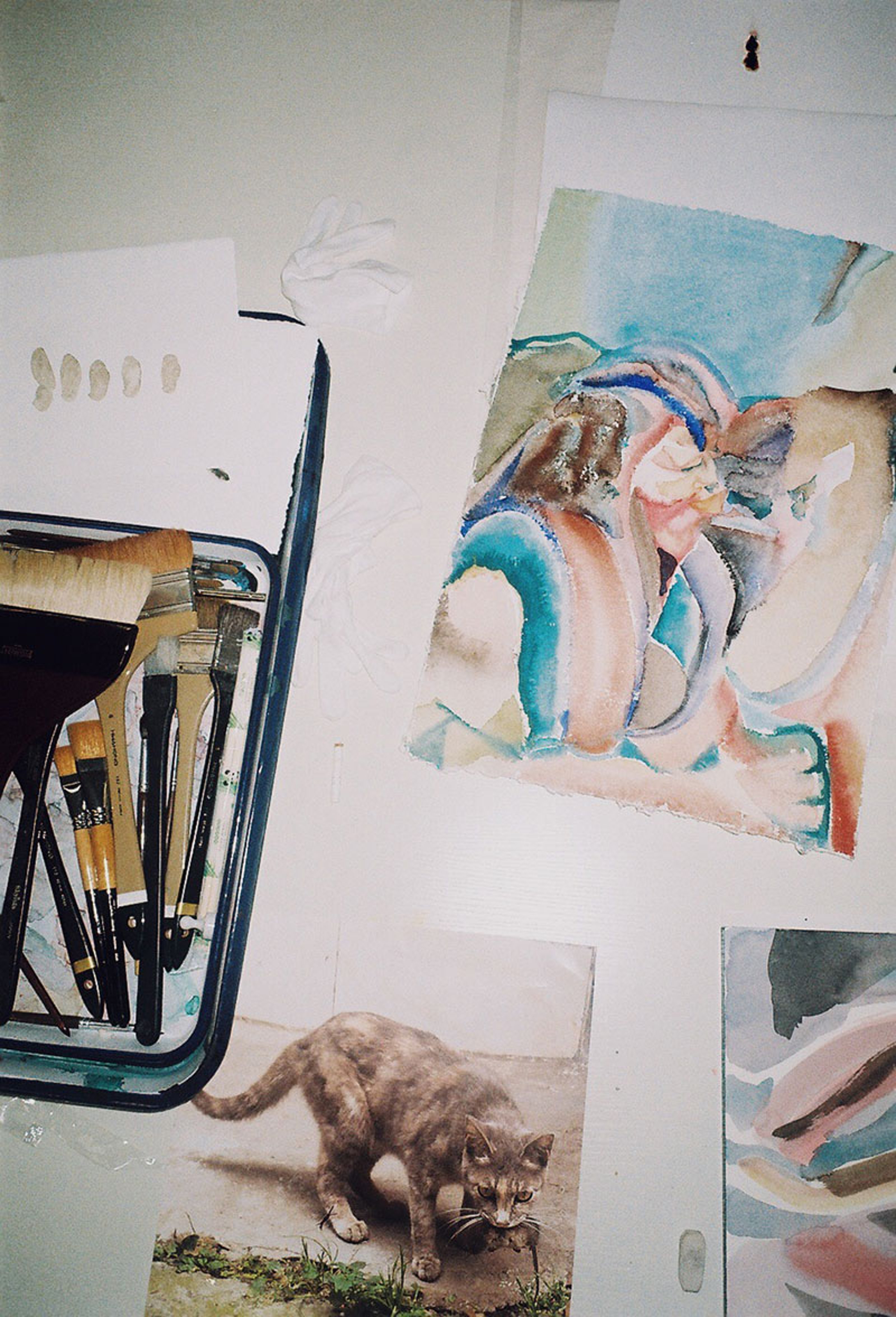
Guo Hongwei’s studio © 223 for Collecteurs Magazine
MC: Why are you fascinated and drawn to exploring color gradations? Light and dark seem very important in your work. Please say more about how light is an integral part of your work and why?
GHW: I suppose every painter is fascinated with exploring color gradations. Gradation is an attribute of time because light changes every second. Color can be thought of as different kinds of light with its own materiality. Differences in color create a sense of dimension and space, and this is what turns abstraction into reality.
MC: For this new Capsule collaboration with Collecteurs and ChART, you created ten watercolors. Please elaborate on what we are looking at? Why did you dissect the larger work into miniature sections that become independent artworks and investigations into color and light on their own?
GHW: This new series of watercolors is titled “Art is for Everyone.” I wrote this title in the painting and I painted the landscape based on the structure of the embedded letters. I combined the written text with the landscape to create a harmonious composition. After dividing the work into smaller sections, the words become scattered and meaningless. Each section of the painting is part of one larger landscape. Similarly, the audience for a work of art can also be broken down into various roles. You could be an artist, collector, curator, journalist, or a casual viewer. These roles guide us to look at art from different perspectives, but only when you combine these elements do you get a complete picture of how “Art is for Everyone.”
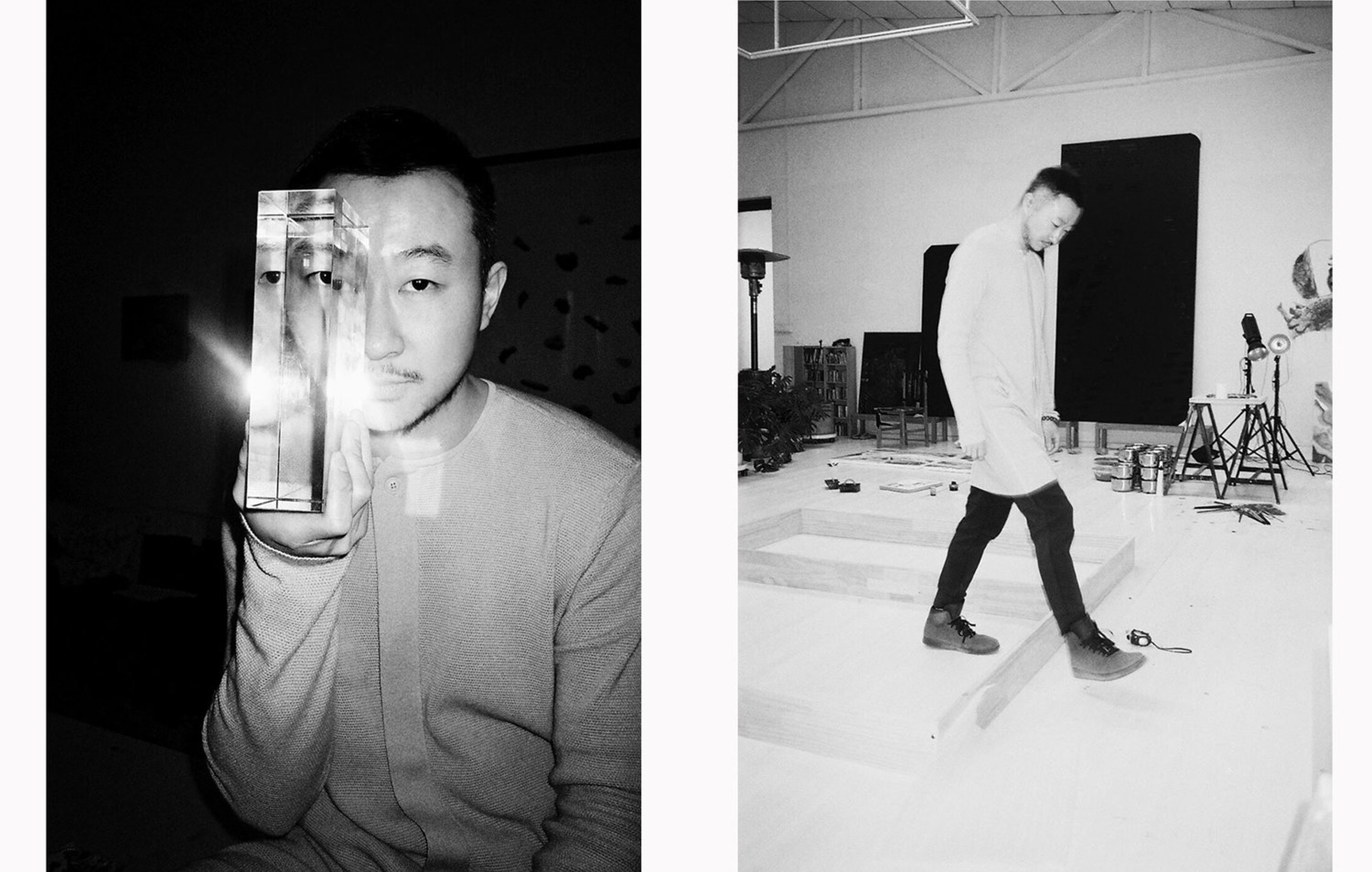
Guo Hongwei in his studio in Beijing © 223 for Collecteurs Magazine
MC: If you were to organize a dinner party at your home, who would you invite to the table and why?
GHW: I enjoy bringing together friends with diverse interests, such as artists who like to write, poets who also film, and musicians who love to draw. Perhaps because diverse people are interested in seeing things from different perspectives. I know every career has its own rules, but when you combine different rules together you give birth to a new set of rules. Through this process we discover the constants throughout these rules and the similarities between all people.
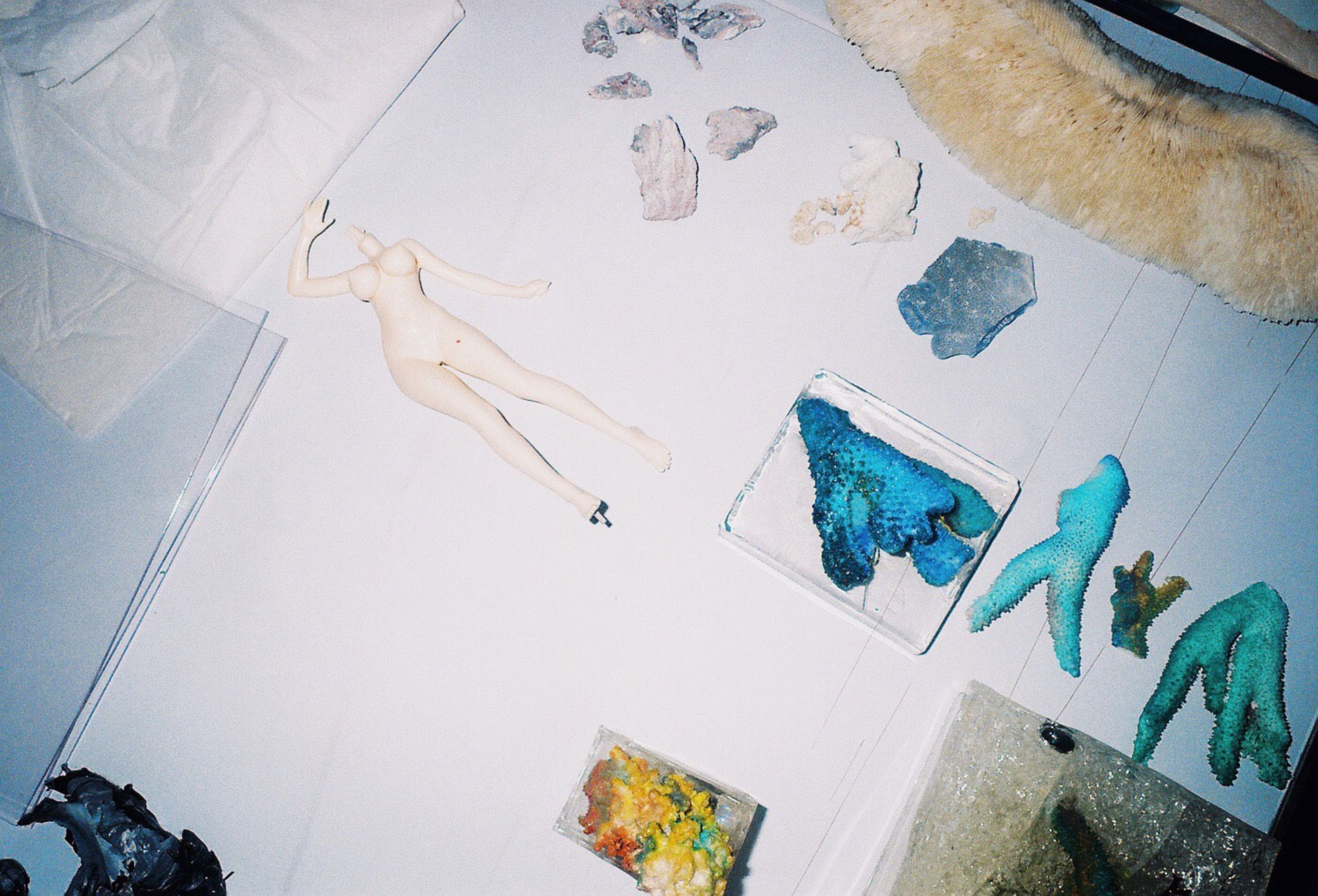
Guo Hongwei’s studio © 223 for Collecteurs Magazine
MC: Where do you envision yourself in 10 years?
GHW: I have no idea. 10 years ago, I had no idea who I’d be today, but I do know that in 10 years some things will never change.
MC: What do you hope to achieve through your art?
GHW: Approaching meaninglessness is the most meaningful achievement.

About ChART Contemporary
ChART Contemporary is a global platform of cultural producers dedicated to educating and demystifying the art world through curated experiences.